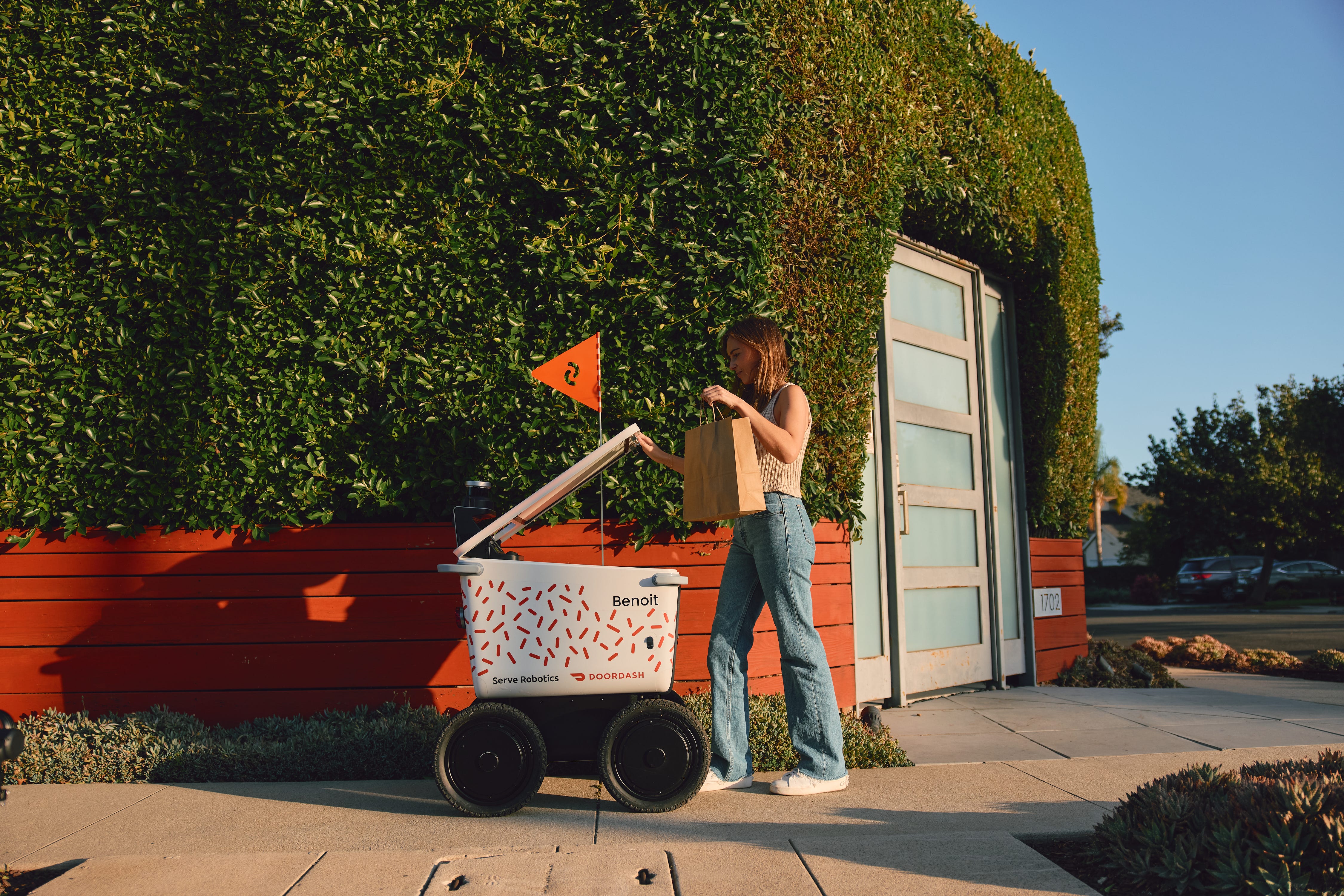
Serve
- Serve Robotics said it will make deliveries for DoorDash on Thursday.
- Serve wants to work with as many delivery services and retailers as possible, CEO Ali Kashani said.
- Delivery by robot represents a bigger business than robotaxis, he added.
Serve Robotics is trying to get as many businesses as possible to use its cooler-shaped delivery robots — even if it means teaming up with an apparent rival.
The autonomous delivery company’s latest partner is DoorDash, which is also developing its own delivery robots. On Thursday, the companies said Serve’s robots would start making deliveries for DoorDash in Los Angeles, a city where Serve already works with Uber Eats.
Ultimately, the goal is to roll out the partnership across the US, the companies said.
Serve, which was spun out of Uber-owned Postmates in 2021, operates delivery robots in five cities: Atlanta, Chicago, Dallas, Los Angeles, and Miami.
Working with DoorDash, which unveiled its own delivery robot last month, might seem counterintuitive. But Ali Kashani, Serve’s CEO, said that DoorDash’s Dot is more complementary than threatening to his company. Right now, he said, there are far more deliveries than robots that can make them, and different robots will be best for different circumstances.
“We are all going to try different approaches and see which one of them makes the most sense,” Kashani told Business Insider in an interview..
The goal is to make delivery robots more like ride-hailing drivers, who switch between working for Uber and Lyft depending on where they can pick up work.
“We want to be a shared platform,” Kashani said. “We want to be an infrastructure that everybody can use.”
Shares of Serve were trading 26% higher on Thursday after the announcement.
Besides DoorDash and Uber Eats, the company also works directly with some restaurants and retailers, including 7-Eleven and Shake Shack.
Robotaxis and robot deliveries are gaining ground
Autonomous vehicles — be they cars or delivery bots — are becoming more common on the sidewalks and streets of US cities.
Robotaxis are appearing in more metro areas: Waymo, which has offered rides in self-driving cars for years in some cities like San Francisco, started making its vehicles available to Uber users in Atlanta and Austin earlier this year. Tesla also started its long-awaited robotaxi service in Austin around the same time.
Smaller self-driving delivery vehicles are also gaining ground, though executives say that using robots for delivery presents a different set of challenges, such as handing off orders from the restaurant to the robot.
Last month, DoorDash unveiled Dot, a stroller-sized delivery robot it developed in-house. The robot can travel up to 20 miles an hour and traverse sidewalks and bike lanes on roads.
While getting around through ride-hailing has become a habit for many consumers, Kashani said that having things delivered is more ubiquitous — and is, potentially, a bigger market for self-driving technology.
“Everybody is very distracted by self-driving cars to move people,” he said. “But for every person, there are so many items that we consume or we touch every day. I actually think it’s as big, if not bigger, than the movement of people.”
Do you have a story to share about delivery? Reach out to this reporter at [email protected].
Read the original article on Business Insider
The post Serve Robotics’ CEO explains why delivery could be a bigger opportunity than robotaxis appeared first on Business Insider.




